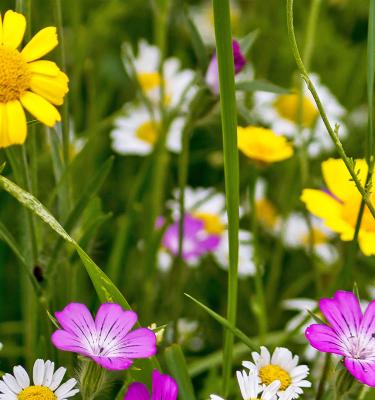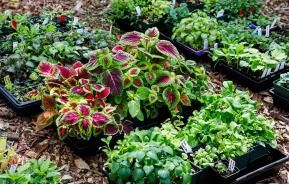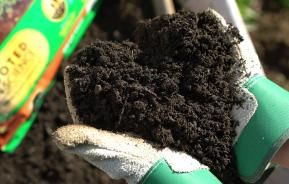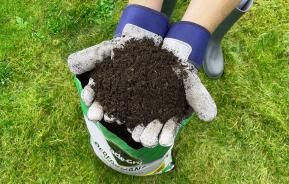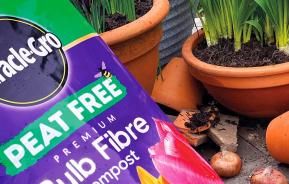British wildflowers are currently enjoying something of a revival as both gardeners and local councils appreciate the many benefits of planting native species.
Whether you're dreaming of a rural paradise or an urban meadow, go wild with British wildflowers in your garden with our simple tips.
Choosing which wildflowers to grow
Wildflower seeds are generally sold in mixes containing a range of different species chosen to complement each other. So how do you choose and how do you identify them?
Think about the type of soil you'll be sowing the seeds into. Most wildflowers prefer a nutrient-poor soil, but good initial soil preparation will pay dividends - see How to sow below.
Give a little consideration to the local wildlife, too - your choice of seeds might just make a real difference. Wildflowers are a key food source for many species, and if you make your garden a haven for bees and butterflies you'll be well rewarded.
Looking for species that are perfect for pollinators? Poppies, cornflowers and viper's bugloss will create a vibrant tapestry in your garden, while also helping the local bee population. Cornflowers, primroses and Michaelmas daisies are attractive to butterflies, which will themselves add beauty to your wildflower garden.
Where to buy wildflowers
Many experienced wildflower gardeners will recommend that you stick to British seed mixes. Not only will you be doing your part to preserve the native flora, but the species will be ideally suited to our climate. You can even take this philosophy a step further and choose varieties which grow naturally in your area. A local supplier may be able to provide you with a specially chosen mix containing species native to your county.
The increased interest in British wildflowers means that many seed mix suppliers now have an internet presence. What's great about the online option is that you'll be able to browse lists of species at your leisure, and often see photographic examples of the finished effect.
When to sow wildflowers
British wildflower seeds can be sown almost year-round - the main exceptions being the coldest weeks of winter when the soil freezes, and periods of prolonged drought during an unusually hot summer. For best results, sow at the height of spring (March/April is usually ideal) or during early autumn - late August to October, depending on your local weather and climate conditions.
Most wildflower seed mixes will yield equally good results whether you opt to sow in spring or in autumn, but occasionally mixes contain species that are more suited to sowing at a particular time of year. This will usually be specified at the time of purchase.
How to sow wildflowers
Be prepared. Good soil preparation is key, and you'll want to start this at least 2 weeks before sowing. Start by clearing the area you'll be using as your seedbed, either by hand or first using a weedkiller if preferred.
Be thorough. To give your wildflowers the best chance of thriving in your seedbed, you need to take care to ensure the area is free from any weeds or grasses that could be in direct competition with the young seedlings. Once the soil is clear, go over the area with a rake, removing any stones or rocks you encounter.
Be patient. Even though your soil now looks clear, it likely still contains weed seeds. Leave enough time for these to germinate - a fortnight at the very least, but preferably 4 weeks - so that you can make a second sweep at clearing them.
Now you're ready to sow your wildflower seeds. Your chosen mix will likely come with instructions about how much seed to use, and you should stick to these for best results. You're ultimately aiming for a lush, natural spread of flowers, so broadcast sowing is usually best. Scatter the recommended amount of seed by hand, gently rake over the surface, and (if rain isn't forecasted) water in.
Finally...
It's important to keep the soil slightly moist for at least the first 6 weeks as the seeds germinate and the seedlings become established. If rainfall is scarce, use a watering can to water the new seedbed every few days. And don't forget to keep an eye on weed and grass growth during this establishment period.
